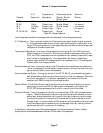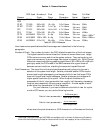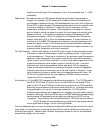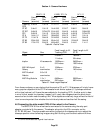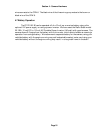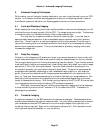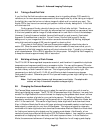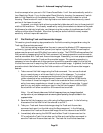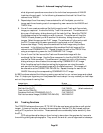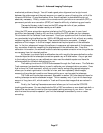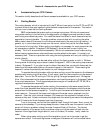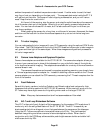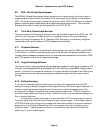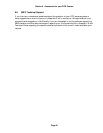Section 5 - Advanced Imaging Techniques
Page 35
functions except when you are in Full Frame Focus Mode. It will then automatically switch to
Low Resolution Mode. If you further select Planet Mode for focusing, the camera will switch
back to High Resolution on the selected box area. The small pixel size, is best for critical
focusing. Planet mode will result in fast digitization and download times since only a small
portion of the frame is read out.
In general, you should pick a binning mode that yields stars with two to three pixels full
width at half maximum. This is easily measured by using the crosshairs to determine the peak
brightness of a relatively bright star, and determining the number of pixels between the 50%
values on either side of the peak. More than 3 pixels per stellar halfwidth merely wastes
sensitivity without improved resolution.
5.7. Flat Fielding Track and Accumulate Images
This section gives the step by step procedure for flat field correcting images taken using the
Track and Accumulate command.
Flat field correcting images allow the user to remove the effects of CCD response non-
uniformity (typically less than a few percent) and optical vignetting which for some optical
systems can be as much as a 50% effect from center to edge. The CCDOPS software allows flat
field correcting images using the Flat Field command, but some preparation must be made to
use that command with Track and Accumulate images. Essentially you must prepare a special
flat field correction image for Track and Accumulate images. This special preparation is
necessary to have the same set of alignment and co-addition operations apply to the flat field
file that have occurred in acquiring the Track and Accumulate image. In general, the following
procedure should be followed when flat field correction of Track and Accumulate images is
desired:
1. Take a normal flat field image using the Grab command. You can use the dusk
sky or a neutral gray or white card held in front of the telescope. Try to adjust
the illumination and/or exposure so that the build up of light in the image
yields values that when co-added several times will not overflow 65,000 counts.
The number of times the image will need to be co-added without overflowing is
set by how many snapshots you intend to use in Track and Accumulate. A good
goal is to try and attain a maximum level in the flat field image of 1,000 to 2,000
counts which will allow co-addition 32 times without overflow.
Note: You will have to take a new flat field image anytime you change the optical
configuration of your telescope such as removing and replacing the optical head in the
eyepiece holder.
2. Save the flat field image on your disk using the Save command. In the following
discussions this flat field file will be referred to as FLAT.
3. Take your Track and Accumulate image using the Track and Accumulate
command and save it on the disk using the Save command. In the following
discussions this Track and Accumulate image file will be referred to as IMAGE.
4. Immediately after saving the IMAGE use the Save Track List command on the
PC or activate the Track List window on the Mac and use the Save command to
save the Track and Accumulate track list. The track list is a file that describes



